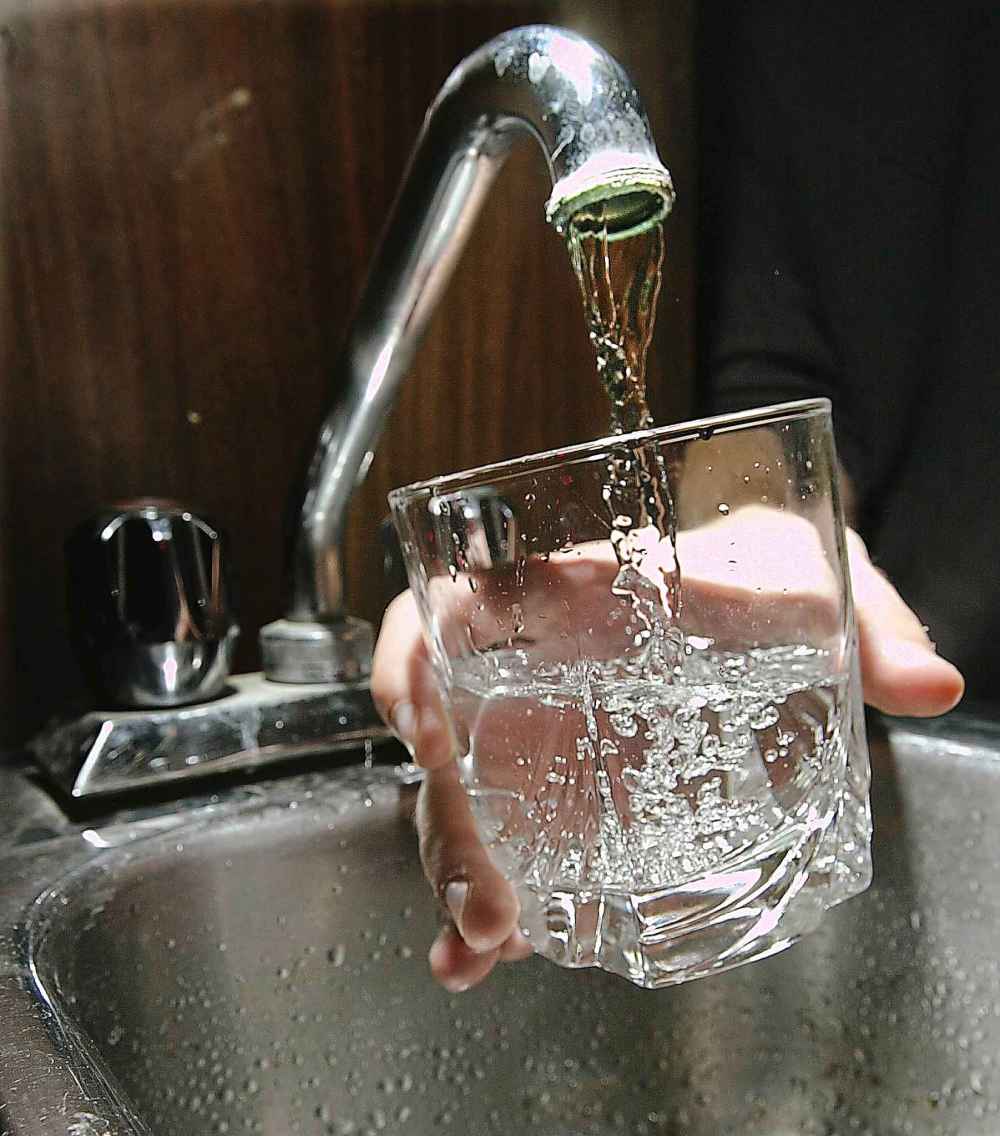Lead test results leave residents’ questions unanswered
Read this article for free:
or
Already have an account? Log in here »
To continue reading, please subscribe:
Monthly Digital Subscription
$0 for the first 4 weeks*
- Enjoy unlimited reading on winnipegfreepress.com
- Read the E-Edition, our digital replica newspaper
- Access News Break, our award-winning app
- Play interactive puzzles
*No charge for 4 weeks then price increases to the regular rate of $19.00 plus GST every four weeks. Offer available to new and qualified returning subscribers only. Cancel any time.
Monthly Digital Subscription
$4.75/week*
- Enjoy unlimited reading on winnipegfreepress.com
- Read the E-Edition, our digital replica newspaper
- Access News Break, our award-winning app
- Play interactive puzzles
*Billed as $19 plus GST every four weeks. Cancel any time.
To continue reading, please subscribe:
Add Free Press access to your Brandon Sun subscription for only an additional
$1 for the first 4 weeks*
*Your next subscription payment will increase by $1.00 and you will be charged $16.99 plus GST for four weeks. After four weeks, your payment will increase to $23.99 plus GST every four weeks.
Read unlimited articles for free today:
or
Already have an account? Log in here »
Hey there, time traveller!
This article was published 19/12/2019 (2184 days ago), so information in it may no longer be current.
After learning some neighbours’ test results show lead concentrations as much as 22 times the national guideline, inner-city residents want answers about their tap water.
But there are 2,300 names on the City of Winnipeg’s sampling wait list — and the city’s free annual testing program won’t start up again until spring.
It is a terrible thing to read on the news that you may have [22] times the lead that’s supposedly OK in your water that you’re feeding to your grandchildren, who are two and five," said Catheryn Martens, 67, a lifelong Wolseley resident.
Earlier this week, the city published the results of its random August water-sampling program of 268 homes across Winnipeg.
The testing was undertaken after the national standard for the safe concentration of lead in water was updated to 0.005 mg/L.

(function() {
var paidAccessCheck = function(){
if($(“.paidaccess”).css(“display”) == “block”){
var elements = Array.prototype.slice.call(document.querySelectorAll(“.g-artboard[data-min-width]”)),
widthById = {};
elements.forEach(function(el) {
var parent = el.parentNode,
width = widthById[parent.id] || parent.getBoundingClientRect().width,
minwidth = el.getAttribute(“data-min-width”),
maxwidth = el.getAttribute(“data-max-width”);
widthById[parent.id] = width;
if (+minwidth = width || maxwidth === null)) {
el.style.display = “block”;
} else {
el.style.display = “none”;
}
});
try {
if (window.parent && window.parent.$) {
window.parent.$(“body”).trigger(“resizedcontent”, [window]);
}
if (window.require) {
require([‘foundation/main’], function() {
require([‘shared/interactive/instances/app-communicator’], function(AppCommunicator) {
AppCommunicator.triggerResize();
});
});
}
} catch(e) { console.log(e); }
clearInterval(verifyPaidAccess);
}
}
var verifyPaidAccess = setInterval(paidAccessCheck,500);
// only want one resizer on the page
if (document.documentElement.className.indexOf(“g-resizer-v3-init”) > -1) return;
document.documentElement.className += ” g-resizer-v3-init”;
// require IE9+
if (!(“querySelector” in document)) return;
function resizer() {
var elements = Array.prototype.slice.call(document.querySelectorAll(“.g-artboard[data-min-width]”)),
widthById = {};
elements.forEach(function(el) {
var parent = el.parentNode,
width = widthById[parent.id] || parent.getBoundingClientRect().width,
minwidth = el.getAttribute(“data-min-width”),
maxwidth = el.getAttribute(“data-max-width”);
widthById[parent.id] = width;
if (+minwidth = width || maxwidth === null)) {
el.style.display = “block”;
} else {
el.style.display = “none”;
}
});
try {
if (window.parent && window.parent.$) {
window.parent.$(“body”).trigger(“resizedcontent”, [window]);
}
if (window.require) {
require([‘foundation/main’], function() {
require([‘shared/interactive/instances/app-communicator’], function(AppCommunicator) {
AppCommunicator.triggerResize();
});
});
}
} catch(e) { console.log(e); }
}
document.addEventListener(‘DOMContentLoaded’, resizer);
// feel free to replace throttle with _.throttle, if available
window.addEventListener(‘resize’, throttle(resizer, 200));
function throttle(func, wait) {
// from underscore.js
var _now = Date.now || function() { return new Date().getTime(); },
context, args, result, timeout = null, previous = 0;
var later = function() {
previous = _now();
timeout = null;
result = func.apply(context, args);
if (!timeout) context = args = null;
};
return function() {
var now = _now(), remaining = wait – (now – previous);
context = this;
args = arguments;
if (remaining wait) {
if (timeout) {
clearTimeout(timeout);
timeout = null;
}
previous = now;
result = func.apply(context, args);
if (!timeout) context = args = null;
} else if (!timeout && options.trailing !== false) {
timeout = setTimeout(later, remaining);
}
return result;
};
}
})();
#g-winnipeg-lead-in-the-water-box ,
#g-winnipeg-lead-in-the-water-box .g-artboard {
margin:0 auto;
}
#g-winnipeg-lead-in-the-water-box p {
margin:0;
}
#g-winnipeg-lead-in-the-water-box .g-aiAbs {
position:absolute;
}
#g-winnipeg-lead-in-the-water-box .g-aiImg {
position:absolute;
top:0;
display:block;
width:100% !important;
}
#g-winnipeg-lead-in-the-water-box .g-aiSymbol {
position: absolute;
box-sizing: border-box;
}
#g-winnipeg-lead-in-the-water-box .g-aiPointText p { white-space: nowrap; }
#g-winnipeg-lead-in-the-water-mobile-small {
position:relative;
overflow:hidden;
}
#g-winnipeg-lead-in-the-water-mobile-small p {
font-weight:500;
line-height:9px;
height:auto;
filter:alpha(opacity=100);
-ms-filter:progid:DXImageTransform.Microsoft.Alpha(Opacity=100);
opacity:1;
letter-spacing:0em;
font-size:7px;
text-align:left;
color:rgb(0,0,0);
text-transform:none;
padding-bottom:0;
padding-top:0;
mix-blend-mode:normal;
font-style:normal;
position:static;
}
#g-winnipeg-lead-in-the-water-mobile-small .g-pstyle0 {
font-weight:700;
line-height:8px;
height:8px;
font-size:12px;
}
#g-winnipeg-lead-in-the-water-mobile-small .g-pstyle1 {
line-height:10px;
}
#g-winnipeg-lead-in-the-water-mobile-small .g-pstyle2 {
font-weight:700;
height:9px;
}
#g-winnipeg-lead-in-the-water-mobile-small .g-pstyle3 {
height:9px;
}
#g-winnipeg-lead-in-the-water-mobile-small .g-pstyle4 {
line-height:7px;
height:7px;
font-size:6px;
text-align:right;
}
#g-winnipeg-lead-in-the-water-mobile-small .g-cstyle0 {
font-weight:700;
}
#g-winnipeg-lead-in-the-water-mobile-small .g-cstyle1 {
font-weight:500;
}
#g-winnipeg-lead-in-the-water-mobile-large {
position:relative;
overflow:hidden;
}
#g-winnipeg-lead-in-the-water-mobile-large p {
font-weight:500;
line-height:11px;
height:auto;
filter:alpha(opacity=100);
-ms-filter:progid:DXImageTransform.Microsoft.Alpha(Opacity=100);
opacity:1;
letter-spacing:0em;
font-size:8px;
text-align:left;
color:rgb(0,0,0);
text-transform:none;
padding-bottom:0;
padding-top:0;
mix-blend-mode:normal;
font-style:normal;
position:static;
}
#g-winnipeg-lead-in-the-water-mobile-large .g-pstyle0 {
font-weight:700;
line-height:9px;
height:9px;
font-size:14px;
}
#g-winnipeg-lead-in-the-water-mobile-large .g-pstyle1 {
line-height:12px;
font-size:9px;
}
#g-winnipeg-lead-in-the-water-mobile-large .g-pstyle2 {
font-weight:700;
height:11px;
}
#g-winnipeg-lead-in-the-water-mobile-large .g-pstyle3 {
height:11px;
}
#g-winnipeg-lead-in-the-water-mobile-large .g-pstyle4 {
line-height:8px;
height:8px;
font-size:7px;
text-align:right;
}
#g-winnipeg-lead-in-the-water-mobile-large .g-cstyle0 {
font-weight:700;
}
#g-winnipeg-lead-in-the-water-mobile-large .g-cstyle1 {
font-weight:500;
}
#g-winnipeg-lead-in-the-water-desktop {
position:relative;
overflow:hidden;
}
#g-winnipeg-lead-in-the-water-desktop p {
font-weight:500;
line-height:12px;
height:auto;
filter:alpha(opacity=100);
-ms-filter:progid:DXImageTransform.Microsoft.Alpha(Opacity=100);
opacity:1;
letter-spacing:0em;
font-size:9px;
text-align:left;
color:rgb(0,0,0);
text-transform:none;
padding-bottom:0;
padding-top:0;
mix-blend-mode:normal;
font-style:normal;
position:static;
}
#g-winnipeg-lead-in-the-water-desktop .g-pstyle0 {
font-weight:700;
line-height:18px;
height:18px;
font-size:18px;
}
#g-winnipeg-lead-in-the-water-desktop .g-pstyle1 {
line-height:14px;
font-size:12px;
}
#g-winnipeg-lead-in-the-water-desktop .g-pstyle2 {
font-weight:700;
height:12px;
}
#g-winnipeg-lead-in-the-water-desktop .g-pstyle3 {
height:12px;
}
#g-winnipeg-lead-in-the-water-desktop .g-pstyle4 {
font-weight:700;
height:12px;
font-size:10px;
}
#g-winnipeg-lead-in-the-water-desktop .g-pstyle5 {
line-height:13px;
height:13px;
text-align:right;
}
#g-winnipeg-lead-in-the-water-desktop .g-cstyle0 {
font-weight:700;
}
#g-winnipeg-lead-in-the-water-desktop .g-cstyle1 {
font-weight:500;
}
#g-winnipeg-lead-in-the-water-desktop .g-cstyle2 {
font-weight:700;
font-size:10px;
}
#g-winnipeg-lead-in-the-water-desktop .g-cstyle3 {
font-size:10px;
}
/* Custom CSS */
.gi.ai2html {
margin-bottom: 1em;
}
.gi.ai2html p {
text-shadow: 1px 1px 0px rgba(255,255,255,0.7), -1px -1px 0px rgba(255,255,255,0.7), -1px 1px 0px rgba(255,255,255,0.7), 1px -1px 0px rgba(255,255,255,0.7);
}
.gi.ai2html #no-shadow p {
text-shadow: none !important;
}
@media screen and (max-width: 375px) {
#gi-1217-wyg-lead-water-mobile-small,
#gi-1217-wyg-lead-water-mobile-large,
#gi-1217-wyg-lead-water-desktop {
display: none;
}
#gi-1217-wyg-lead-water-mobile-small {
display: block;
}
}
@media screen and (min-width: 375px) and (max-width: 569px) {
#gi-1217-wyg-lead-water-mobile-small,
#gi-1217-wyg-lead-water-mobile-large,
#gi-1217-wyg-lead-water-desktop {
display: none;
}
#gi-1217-wyg-lead-water-mobile-large {
display: block;
}
}
@media screen and (min-width: 570px) {
#gi-1217-wyg-lead-water-mobile-small,
#gi-1217-wyg-lead-water-mobile-large,
#gi-1217-wyg-lead-water-desktop {
display: none;
}
#gi-1217-wyg-lead-water-desktop {
display: block;
}
}

Testing for lead in Winnipeg’s water supply
In August, the City of Winnipeg offered to test for lead in the drinking water of approximately 23,000 homes.
Manitoba’s Office of Drinking Water required 200 tests from the city and this quota was quickly reached. The results, released in December, identify several neighbourhoods where lead levels exceeded the federal guidelines of 0.005 mg/L.
Fort Rouge – East Fort Garry
2,526 homes with lead pipes
51 tested, 27.5% of tests above guidelines
Max: 0.036960 mg/L
After 1 minute flush: 0.045937 mg/L
Point Douglas
3,009 homes with lead pipes
16 tested, 25% of tests above guidelines
Max: 0.013345 mg/L
After 1 minute flush: 0.014751 mg/L
Elmwood – East Kildonan
2,755 homes with lead pipes
16 tested, 31.3% of tests above guidelines
Max: 0.044972 mg/L
After 1 minute flush: 0.012455 mg/L
Daniel McIntyre
5,496 homes with lead pipes
83 tested, 16.9% of tests above guidelines
Max: 0.028998 mg/L
After 1 minute flush: 0.10822 mg/L
Winnipeg Free Press Source: City of Winnipeg
Updated December 20, 2019

Testing for lead in Winnipeg’s water supply
In August, the City of Winnipeg offered to test for lead in the drinking water of approximately 23,000 homes.
Manitoba’s Office of Drinking Water required 200 tests from the city and this quota was quickly reached. The results, released in December, identify several neighbourhoods where lead levels exceeded the federal guidelines of 0.005 mg/L.
Fort Rouge – East Fort Garry
2,526 homes with lead pipes
51 tested, 27.5% of tests above guidelines
Max: 0.036960 mg/L
After 1 minute flush: 0.045937 mg/L
Point Douglas
3,009 homes with lead pipes
16 tested, 25% of tests above guidelines
Max: 0.013345 mg/L
After 1 minute flush: 0.014751 mg/L
Elmwood – East Kildonan
2,755 homes with lead pipes
16 tested, 31.3% of tests above guidelines
Max: 0.044972 mg/L
After 1 minute flush: 0.012455 mg/L
Daniel McIntyre
5,496 homes with lead pipes
83 tested, 16.9% of tests above guidelines
Max: 0.028998 mg/L
After 1 minute flush: 0.10822 mg/L
Winnipeg Free Press Source: City of Winnipeg
Updated December 20, 2019

Testing for lead in Winnipeg’s water supply
In August, the City of Winnipeg offered to test for lead in the drinking water of approximately 23,000 homes.
Manitoba’s Office of Drinking Water required 200 tests from the city and this quota was quickly reached. The results, released in December, identify several neighbourhoods where lead levels exceeded the federal guidelines of 0.005 mg/L.
Fort Rouge – East Fort Garry
2,526 homes with lead pipes
51 tested, 27.5% of tests above federal guidelines
Max: 0.036960 mg/L
After 1 minute flush: 0.045937 mg/L
Point Douglas
3,009 homes with lead pipes
16 tested, 25% of tests above federal guidelines
Max: 0.013345 mg/L
After 1 minute flush: 0.014751 mg/L
Elmwood – East Kildonan
2,755 homes with lead pipes
16 tested, 31.3% of tests above federal guidelines
Max: 0.044972 mg/L
After 1 minute flush: 0.012455 mg/L
St. James
558 homes with lead pipes
8 tested, 37.5% of tests above federal guidelines
Max: 0.011710 mg/L
River Heights
1,905 homes with lead pipes
62 tested, 11.3% of tests above federal guidelines
Max: 0.010381 mg/L
After 1 minute flush: 0.019694 mg/L
Mynarski
4,971 homes with lead pipes
25 tested, 20% of tests above federal guidelines
Max: 0.014615 mg/L
After 1 minute flush: 0.009642 mg/L
St. Vital
665 homes with lead pipes
2 tested, 50% of tests above federal guidelines
Max: 0.006250 mg/L
After 1 minute flush: 0.005469 mg/L
Daniel McIntyre
5,496 homes with lead pipes
83 tested, 16.9% of tests above federal guidelines
Max: 0.028998 mg/L
After 1 minute flush: 0.10822 mg/L
Winnipeg Free Press Source: City of Winnipeg
Updated December 20, 2019
Of the 83 homes tested in Daniel McIntyre, 17 per cent tested above the guideline. The greatest concentration of lead in tap water (0.10822 mg/L) was found in the downtown ward, although the amount found in taps decreased drastically after residents flushed their lines. (The 0.10822 mg/L test result was registered after a minute of flushing.)
The city estimates there are approximately 5,496 homes with lead pipes in the area, which is home to many pre-war buildings.
“It would almost be better if it was a central water problem, because then at least you could attack the source or do something at the water treatment plant,” said Christian Cassidy, housing co-ordinator for Daniel McIntyre St. Matthews Community Association.
“It is a terrible thing to read on the news that you may have 58 times the lead that’s supposedly OK in your water that you’re feeding to your grandchildren, who are two and five.” – Catheryn Martens, lifelong Wolseley resident
Cassidy said now the challenges are the city’s limited free testing, getting the word out to residents about how to tackle the problem,and convincing landlords to undertake costly replumbing projects (more than half of the area residents live in rentals). As well, he said there is no financial assistance for low-income residents to put in copper pipes.
Flushing is the solution the city, local councillor and a doctor with the Winnipeg Regional Health Authority have offered up after the results were released.
No Daniel McIntyre samples taken after five minutes of "flushing" — meaning: running the taps, taking a shower or doing another activity that requires water run through pipes for that length of time — surpassed the national guideline.
Out of precaution, Wolseley resident Angela Senak has started doing just that. A mother of two, Senak runs her taps for five minutes when she wakes up, so her toddler and four-year-old aren’t exposed to excess lead.

“Just to be safe — I know it’s an older home and older neighbourhood,” Senak said, while out for a walk with her two sons Thursday afternoon.
The WRHA has recorded two inpatient lead-exposure cases in 15 years. Dr. Heejune Chang, a medical officer of health at the authority, said it’s “very unlikely” either was linked to contaminated water, since severe poisoning is a product of acute exposure, such as working closely with the neurotoxin.
Even small amounts of exposure can cause serious problems as it accumulates in the body over time. Development delays, learning difficulties, sluggishness, abdominal pain and seizures are all potential health effects.
Coun. Cindy Gilroy said the city’s next round of free testing has to take place during the warmer months, between May and October. She said the city plans to focus on areas that are “high-risk,” such as her ward. The city also plans to launch an educational campaign about lead in pipes.
While some residents are frustrated about the unknown, others are waiting patiently to find out if they have to invest in costly upgrades.
Lindsey McBain, 40, was one of the lucky ward residents to get a test — but three months later, he still doesn’t have results. The father of two knows he has about four metres of lead pipe under his front yard.
“I want the city to be appropriately proactive in measuring to make sure that we are safe,” he said from his doorstep Thursday. “I’m not super concerned, but I want to know if we are safe.”
maggie.macintosh@freepress.mb.ca
Twitter: @macintoshmaggie

Maggie Macintosh reports on education for the Winnipeg Free Press. Funding for the Free Press education reporter comes from the Government of Canada through the Local Journalism Initiative.
Our newsroom depends on a growing audience of readers to power our journalism. If you are not a paid reader, please consider becoming a subscriber.
Our newsroom depends on its audience of readers to power our journalism. Thank you for your support.
History
Updated on Friday, December 20, 2019 3:11 PM CST: Corrects maximum test result for Daniel McIntyre
Updated on Friday, December 20, 2019 6:51 PM CST: Corrects maximum concentration for Daniel McIntyre








